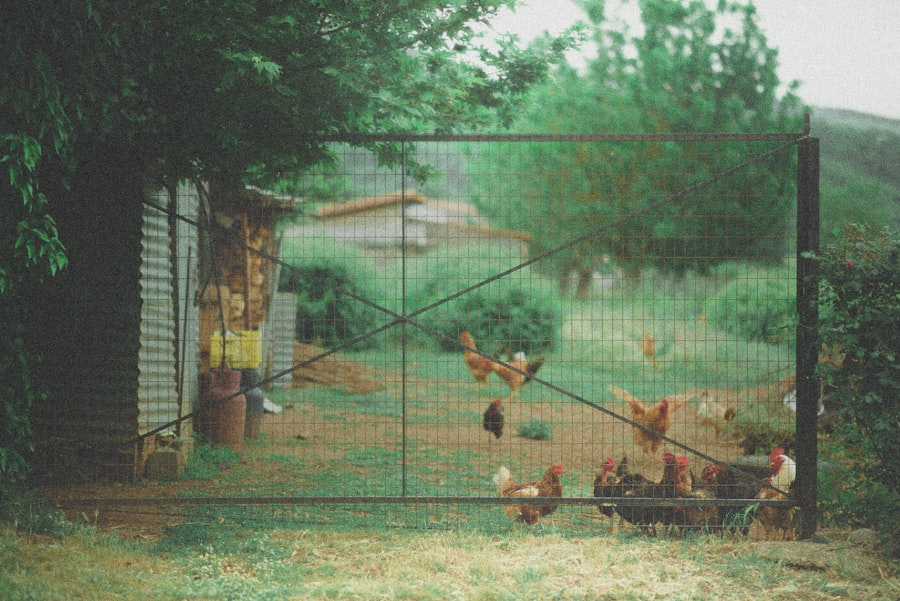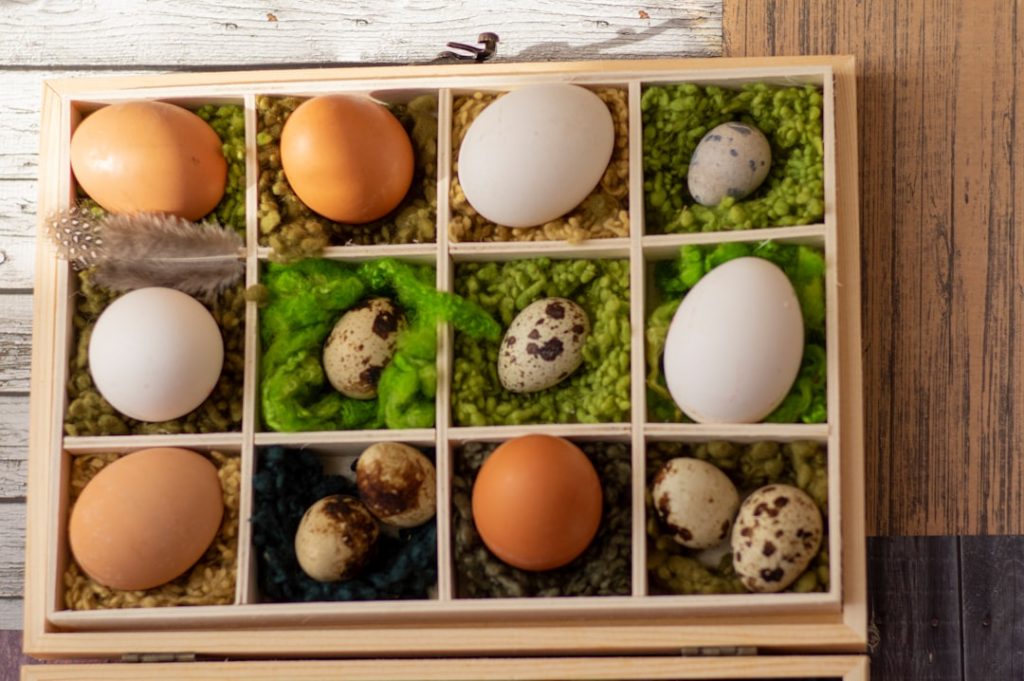Initial costs for starting a backyard chicken coop include purchasing chickens, which varies in price depending on breed and age. A coop and run are essential, with options ranging from DIY projects using reclaimed materials to pre-made structures. Additional expenses include feeders, waterers, bedding, and potential permits or zoning requirements.
Starting a backyard chicken coop can be cost-effective with resourceful planning. Affordable or free chickens may be available through local farms, hatcheries, or online classifieds. Building a coop and run using reclaimed materials can significantly reduce expenses.
Cost-effective options for feeders, waterers, and bedding are also available. Careful planning and budgeting can help establish a backyard chicken coop economically.
Table of Contents
- 1 Maintenance Expenses
- 2 Feed and Bedding Costs
- 3 Coop and Run Construction
- 4 Health Care and Veterinary Costs
- 5 Egg Production and Savings
- 6 Potential Income from Selling Eggs or Meat
- 7 FAQs
- 7.1 What are the initial costs of keeping chickens?
- 7.2 What are the ongoing expenses of keeping chickens?
- 7.3 Are there any unexpected costs associated with keeping chickens?
- 7.4 How do the costs of keeping chickens compare to the benefits?
- 7.5 Are there ways to reduce the expenses of keeping chickens?
Key Takeaways
- Initial Costs:
- Initial costs for raising chickens include purchasing the birds, a coop, feeders, waterers, and bedding materials.
- The total initial cost can vary depending on the number of chickens and the quality of the coop and equipment.
- Maintenance Expenses:
- Regular maintenance expenses for chickens include feed, bedding, and occasional equipment replacement.
- These expenses can add up over time, so it’s important to budget for ongoing maintenance costs.
- Feed and Bedding Costs:
- Feed and bedding costs are ongoing expenses that can vary based on the number of chickens and their dietary needs.
- It’s important to factor in these costs when budgeting for chicken ownership.
- Coop and Run Construction:
- Building a coop and run for chickens can be a significant initial cost, but it’s essential for their safety and well-being.
- The construction cost will depend on the size and quality of materials used.
- Health Care and Veterinary Costs:
- Chickens may require occasional veterinary care and vaccinations, which can add to the overall cost of ownership.
- It’s important to budget for potential health care expenses to ensure the well-being of the flock.
- Egg Production and Savings:
- Raising chickens can lead to significant savings on eggs, as well as the satisfaction of producing your own food.
- The number of eggs produced will depend on the breed and age of the chickens.
- Potential Income from Selling Eggs or Meat:
- Selling excess eggs or meat from chickens can provide a potential source of income for chicken owners.
- This can help offset some of the initial and ongoing costs of raising chickens.
Maintenance Expenses
Feed Costs and Factors to Consider
One of the most significant expenses to consider when running a backyard chicken coop is the cost of chicken feed. The amount of feed your chickens will consume can vary depending on factors such as breed, age, and the availability of foraging opportunities.
Additional Expenses to Budget For
In addition to feed costs, you’ll need to budget for regular bedding replacement, as well as any necessary supplements or medications for your chickens. It’s essential to factor in these ongoing maintenance expenses when planning for your backyard chicken coop to ensure that you can provide proper care for your flock.
Minimizing Maintenance Expenses
On the other hand, there are ways to minimize maintenance expenses for your backyard chicken coop. For example, you can reduce feed costs by allowing your chickens to free-range and forage for insects and plants. Additionally, you can save money on bedding by using materials such as straw or wood shavings that are readily available and affordable.
Feed and Bedding Costs

One of the ongoing expenses of maintaining a backyard chicken coop is the cost of feed and bedding for your flock. The type and amount of feed your chickens will require can vary depending on factors such as breed, age, and the availability of foraging opportunities. Additionally, you’ll need to budget for regular bedding replacement to ensure that your chickens have a clean and comfortable living environment.
It’s important to factor in these ongoing feed and bedding costs when planning for your backyard chicken coop to ensure that you can provide proper care for your flock. On the other hand, there are ways to minimize feed and bedding costs for your backyard chicken coop. For example, you can reduce feed costs by allowing your chickens to free-range and forage for insects and plants.
Additionally, you can save money on bedding by using materials such as straw or wood shavings that are readily available and affordable. By carefully managing feed and bedding costs and exploring cost-saving strategies, you can ensure that your backyard chicken coop remains a sustainable and budget-friendly endeavor.
Coop and Run Construction
The construction of a coop and run is an essential aspect of starting a backyard chicken coop. The cost of building or purchasing a coop and run can vary depending on factors such as size, materials, and any additional features or amenities. If you choose to build your own coop and run, you’ll need to factor in the cost of materials such as lumber, hardware, roofing materials, and fencing.
Additionally, you may need to invest in tools or equipment if you don’t already have them. It’s important to carefully plan and budget for coop and run construction to ensure that you have a safe and comfortable living space for your chickens. On the other hand, building your own coop and run can be a cost-effective option for starting a backyard chicken coop.
By using reclaimed materials or repurposing existing structures, you can significantly reduce construction costs. Additionally, there are many DIY plans and resources available online that can help guide you through the construction process. With careful planning and resourcefulness, you can create a functional and affordable coop and run for your backyard chicken coop.
Health Care and Veterinary Costs
Ensuring the health and well-being of your backyard chicken flock is an important aspect of maintaining a successful coop. This includes budgeting for potential health care and veterinary costs. While chickens are generally hardy animals, they can still be susceptible to illnesses or injuries that may require medical attention.
Additionally, you may need to invest in preventative measures such as vaccinations or parasite control to keep your flock healthy. It’s important to factor in these potential health care and veterinary costs when planning for your backyard chicken coop to ensure that you can provide proper care for your flock. On the other hand, there are ways to minimize health care and veterinary costs for your backyard chicken flock.
For example, practicing good biosecurity measures can help prevent the spread of diseases within your flock. Additionally, learning how to recognize common health issues in chickens and providing proper nutrition and housing can help reduce the likelihood of needing veterinary care. By taking proactive measures to promote the health of your flock, you can minimize potential health care expenses for your backyard chicken coop.
Egg Production and Savings

Egg Production and Cost Savings
The number of eggs your chickens will produce can vary depending on factors such as breed, age, and environmental conditions. By keeping track of egg production and calculating the cost savings compared to purchasing eggs from the store, you can determine the financial benefits of maintaining a backyard chicken coop.
Nutritional Benefits and Reliance on Store-Bought Eggs
Having a fresh supply of eggs from your own flock can provide nutritional benefits and reduce reliance on store-bought eggs. However, it’s important to consider that egg production may fluctuate throughout the year due to factors such as seasonal changes in daylight hours or molting periods.
Factoring in Ongoing Expenses
Additionally, there are ongoing expenses associated with maintaining a backyard chicken coop that should be factored into the overall cost savings from egg production. By carefully monitoring egg production and managing expenses, you can maximize the financial benefits of maintaining a backyard chicken coop.
Potential Income from Selling Eggs or Meat
In addition to providing eggs for personal use, maintaining a backyard chicken coop can also provide potential income from selling eggs or meat. If you have a surplus of eggs from your flock, you may be able to sell them locally to friends, family, or neighbors. Additionally, if you raise chickens for meat production, there may be opportunities to sell surplus birds or meat products at local markets or directly to consumers.
By exploring potential income opportunities from selling eggs or meat, you can offset some of the expenses associated with maintaining a backyard chicken coop. On the other hand, it’s important to consider any legal or regulatory requirements for selling eggs or meat from your backyard chicken flock. This may include obtaining necessary permits or licenses, as well as complying with food safety regulations.
Additionally, it’s important to carefully consider ethical considerations when selling eggs or meat from your flock to ensure that you are providing humane treatment for your chickens. By exploring potential income opportunities while also considering legal and ethical considerations, you can responsibly pursue income from selling eggs or meat from your backyard chicken coop.
If you’re considering keeping chickens, you may also be interested in learning about quail breeding. Poultry Wizard has a helpful article on whether quails sit on their eggs, which can provide valuable insights for those looking to expand their poultry-keeping endeavors.
FAQs
What are the initial costs of keeping chickens?
The initial costs of keeping chickens include purchasing a coop, feeders, waterers, bedding, and of course, the chickens themselves. These costs can vary depending on the size and quality of the items purchased.
What are the ongoing expenses of keeping chickens?
Ongoing expenses for keeping chickens include the cost of feed, bedding, and any necessary medical care. Additionally, there may be costs associated with replacing or repairing equipment and maintaining the coop and run.
Are there any unexpected costs associated with keeping chickens?
There can be unexpected costs associated with keeping chickens, such as veterinary bills for unexpected illnesses or injuries, predator-proofing the coop and run, and any necessary repairs or upgrades to the chicken housing and equipment.
How do the costs of keeping chickens compare to the benefits?
The costs of keeping chickens can vary depending on factors such as the number of chickens, the quality of their housing and equipment, and the cost of feed and bedding. However, many people find that the benefits of keeping chickens, such as fresh eggs, pest control, and the enjoyment of caring for the birds, outweigh the costs.
Are there ways to reduce the expenses of keeping chickens?
There are several ways to reduce the expenses of keeping chickens, such as building your own coop and run, sourcing feed and bedding in bulk, and practicing good management to prevent health issues and minimize the need for veterinary care. Additionally, some people choose to sell eggs or chicks to offset the costs of keeping chickens.
Meet Walter, the feathered-friend fanatic of Florida! Nestled in the sunshine state, Walter struts through life with his feathered companions, clucking his way to happiness. With a coop that’s fancier than a five-star hotel, he’s the Don Juan of the chicken world. When he’s not teaching his hens to do the cha-cha, you’ll find him in a heated debate with his prized rooster, Sir Clucks-a-Lot. Walter’s poultry passion is no yolk; he’s the sunny-side-up guy you never knew you needed in your flock of friends!







